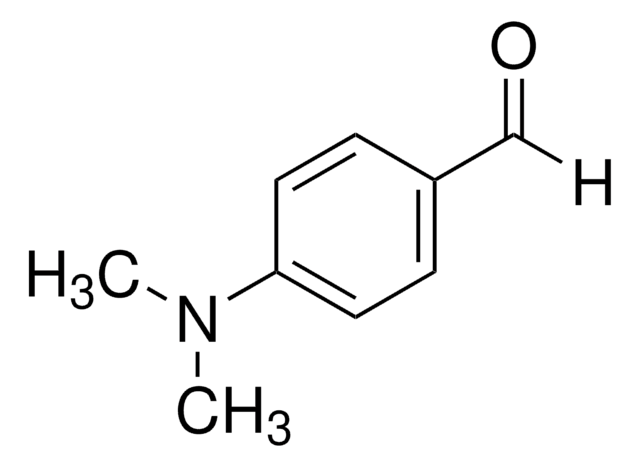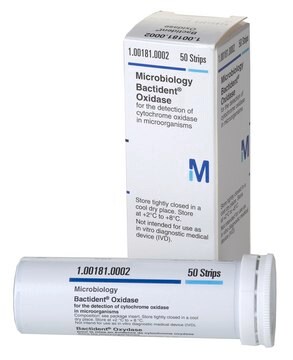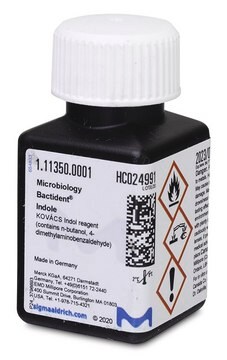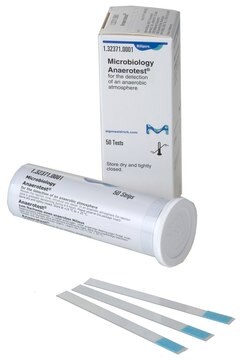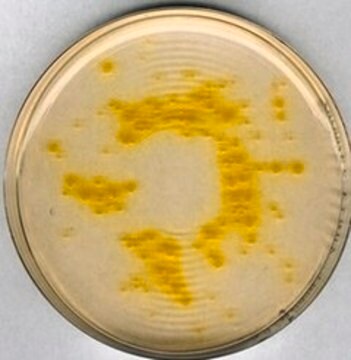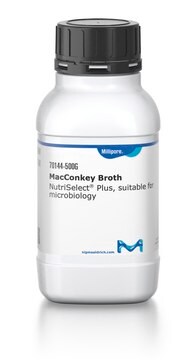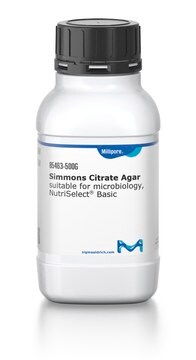78719
Kovac′s Reagent Strips
suitable for microbiology
Synonym(s):
Indole Reagent Test sticks according to Kovac
About This Item
Recommended Products
sterility
sterile
Quality Level
shelf life
limited shelf life, expiry date on the label
packaging
pkg of 25 strips
storage condition
(Prevent from moisture)
technique(s)
microbe id | specific enzyme detection: suitable
application(s)
agriculture
clinical testing
environmental
food and beverages
microbiology
storage temp.
2-8°C
suitability
Escherichia coli
enterobacteriaceae
General description
Application
Packaging
Components
Analysis Note
Storage Class
11 - Combustible Solids
wgk_germany
WGK 3
flash_point_f
Not applicable
flash_point_c
Not applicable
ppe
Eyeshields, Gloves, type N95 (US)
Choose from one of the most recent versions:
Already Own This Product?
Find documentation for the products that you have recently purchased in the Document Library.
Customers Also Viewed
Articles
For microbiologists the most fundamental stain was developed in 1884 by the Danish bacteriologist Hans Christian Gram.
There are many other methods of detection to indicate the presence of E. coli. Review common tests and biochemical reactions for this contaminant.
Our team of scientists has experience in all areas of research including Life Science, Material Science, Chemical Synthesis, Chromatography, Analytical and many others.
Contact Technical Service
